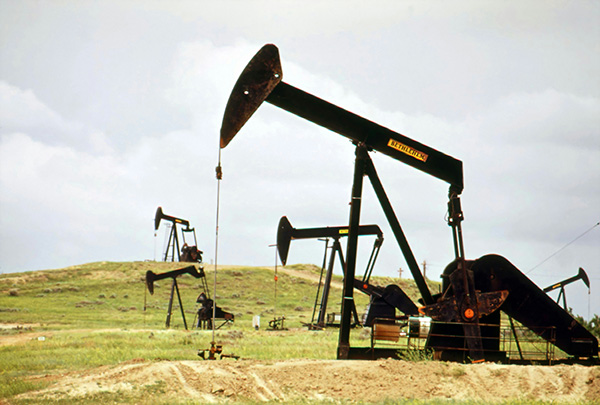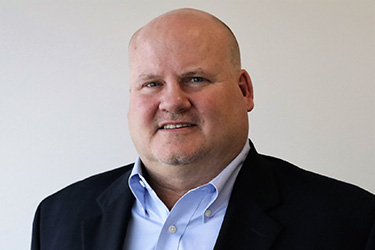Critical infrastructure requires heightened levels of resiliency due to the domino effect of interdependency.
by Joe Morgan, Segment Development Manager, Critical Infrastructure
As a child in elementary school science classes, many of us heard the song “Dem Bones.” This song, intended for children to learn about human anatomy, describes how the human bones are interconnected and provide stability for the human body: “The toe bone’s connected to the foot bone.” Just like the human body depends on each bone being connected to the next seamlessly, our 16 critical infrastructure sectors and subsectors depend on each other to make society function.
Critical infrastructure makes up the metaphorical backbone of our society, providing essential services. These sectors are all interconnected, just like a skeletal system, so disruption to even one can have serious repercussions. It’s vital that those providing these services can maintain continuity, even if struck by a cyberattack, natural disaster, physical breach, or even simple human error.
Because of this, governments around the world are taking steps to ensure critical assets of the involved industries are resilient to any potential threat. The CER Directive itself defines resilience as a “critical entity’s ability to prevent, protect against, respond to, resist, mitigate, absorb, accommodate and recover from an incident.” In simple terms, this means that organizations must show that they have taken all necessary steps to minimize any potential for an accident to happen, and beyond that, show that they are prepared with contingencies in place in the event an incident does occur.
Why is this heightened level of resiliency so important? One word: interdependency. Though we’re familiar with most of the 16 critical infrastructure sectors, like agriculture, transportation, or energy, those sectors also include lesser-known fields like dams. Each sector plays an important role in keeping society moving forward, and without all of the sectors working in harmony, they’d quickly fall apart. Let’s look at three of these sectors, their interdependencies, and how they rely on each other to function.

Energy Sector: The energy sector is a large and all-encompassing term that describes a complex network of companies involved in the production and distribution of energy. This is the energy needed to power the economy and facilitate the means of production and transportation. Without this sector, none of the others can truly function.
Transportation Sector: Electricity, gas, or diesel provided by the energy sector are required to fill our cars, run our trains, and fly our planes. This means that fertilizer couldn’t reach farmers and irrigation systems couldn’t operate, resulting in the significant slowing of food production. The domino effect from a single incident in the highly interdependent energy sector would deeply impact transportation.
Food and Agriculture Sector: In this theoretical domino, if energy goes down, transportation will follow, quickly taking down food and agriculture. Production, storage, and distribution are the three major areas in this sector, which also rely on transportation being up and running. If these areas are suddenly unavailable, alternative food procurement will be required, and we’re already approaching survival issues instead of just societal issues, underscoring the need to protect one sector in order to protect all.

The sobering reality is that all critical infrastructure segments are connected in one way or another, and so is the technology that runs each sector. Building layered resiliency through technology is key to preventing failure in critical infrastructure systems. Those responsible for this resiliency—whether it’s through regulations, legislation, or simple duty—must be aware of all new technology available to them to ensure this safety.
Organizations are already using surveillance devices armed with AI capabilities to allow analytics to do the “thinking” for them, alerting on security incidents, maintenance issues, and other events in real-time, without the need for (comparatively slow) human intervention. AI-based analytics are more capable than ever before of ingesting massive amounts of data and seeing a problem before it even arises, which can help infrastructure organizations avoid unnecessary—and potentially costly–incidents. Devices with AI and ML abilities will automate this process even further and allow for a seamless data-gathering to analytics transition. To combine all of this technological power, though, organizations have to seek out the right partners for the job.
When it comes to critical infrastructure, there can’t be such a thing as settling. Because of the way each sector relies upon the other, there also can’t be one sector that’s weaker, alerts later, or is less resilient. All stakeholders, from end users to suppliers, have a role to play in ensuring the security and resilience of critical infrastructure and industrial sites. By establishing relationships with trusted technology partners, these organizations will be able to find solutions that balance quality, reliability, and cost-effectiveness. The right partner will also allow for future scalability and enhancement, meeting not just the needs of today, but preparing for the future. After all, we won’t get very far without “Dem Bones.”

Joe Morgan is the Business Development Manager for Critical Infrastructure at Axis Communications, Inc. In this capacity, he is responsible for developing strategies and building channel relationships to expand Axis’ presence in markets specific to Critical Infrastructure in North America. Mr. Morgan has more than 32 years of experience building market share in the critical infrastructure industry. He has completed course work to become specialized in Optical Imaging and through previous experience and additional coursework has also become specialized in Optical Security. Prior to joining Axis in 2017, Mr. Morgan held previous positions serving in a business development and sales capacity at FLIR Systems, Olympus Industrial and Everest/VIT where he helped deliver new technology to emerging markets. Mr. Morgan focuses on thermal imaging specifically to the petrochemical and oil and gas markets. Mr. Morgan has his CFATS certification and is an active member with ASIS. He holds a B.A. in education from the University of Texas at Arlington.
From tradition to transformation Sequoia Brass & Copper has stood for excellence in American manufacturing. In this episode, we sit down with Kim MacFarlane, President of Sequoia Brass & Copper, to hear the inspiring story of a family-owned company founded by her father, built on craftsmanship, trust, and a relentless commitment to quality. Kim shares how she’s guided the company through the challenges of modern industry while honoring its heritage, and how the next chapter will be carried forward by her son Kyle. This is more than a story of brass and copper; it’s about resilience, innovation, and the enduring strength of family legacy. If you’ve ever wondered how tradition can meet the demands of today’s industry hit play and be inspired.